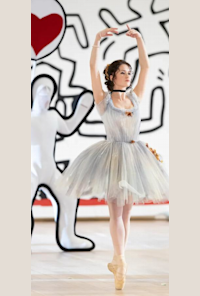Gioacchino Rossini's Journey to Reims is an unusual example of a 19th-century "actual" operatic work. The opera was written practically “on the topic of the day”: its characters strive to get to the coronation
Charles X. All of France was waiting for this event, the excitement was huge. The magnificent ritual of the coronation seemed to be a symbol of a return to the traditions of the pre-revolutionary monarchy.
The coronation took place in Reims on May 28, 1825, and three weeks later, on June 19, the premiere of Rossini's opera written on this occasion took place at the Italian Theater in Paris. Extraordinarily complex parts were designed for the best performers of that time; Giuditta Pasta, Esther Mombelli, Laura Chinti, Marco Bordogni, Domenico Donzelli, Nicolas Levasseur shone at the premiere.
The librettist Luigi Balocchi used the motifs of Madame de Stael's novel Corinna, or Italy, but on the whole composed an independent plot. The action takes place in the Golden Lily Hotel, where representatives of aristocratic society from all over Europe stopped on their way to Reims.
Among the guests are a poetess from Italy, a French countess, a Polish marquise, a German baron, Russian and Spanish generals... The distinguished guests are great originals and eccentrics. They get into comic situations every now and then. In the end, they have to cancel the trip for which they were all here. Travelers, however, do not remain discouraged for long and decide to arrange a festive banquet right in the hotel. Each of the guests makes a toast in the spirit of his native country. The opera ends with a solemn general ensemble - a single celebration of the king on behalf of all of Europe.
The audience enthusiastically welcomed individual numbers, but in general, Reims was received coolly and did not live up to the expectations of its creators. After several performances, the composer withdrew the score from the theater and even turned down an offer to publish it for a high fee.
Three years later, while working on the opera Le Comte Ory, Rossini almost completely composed the first act of the new composition from the numbers of Journey to Reims.
It seemed that the "coronation opera" had sunk into oblivion, but in 1977 fragments of the score were found in the library of the Accademia Santa Cecilia in Rome, which were not known from "Count Ory". In 1984, Journey to Reims, revived by the efforts of musicologists, was presented at the Rossini Festival directed by director Luca Ronconi. The line-up, which included the leading artists of the world opera scene - Cecilia Gasdia, Lucia Valentini Terrani, Lella Cuberli, Katya Ricciarelli, Samuel Raimi, Ruggiero Raimondi, Enzo Dara, Leo Nucci, was conducted by Claudio Abbado.
From that moment on, "Journey to Reims" successfully competes with "Count Ory" and even outstrips him in popularity. In Russia, the opera was first performed in 2001 at the Stars of the White Nights festival in St. Petersburg (in a concert performance by the Academy of Young Singers conducted by Yuri Bashmet). The stage version was staged in 2005 by the Mariinsky Theater in cooperation with the Châtelet Theater in Paris (music director of the production is Valery Gergiev). In Moscow, "Journey" was performed in 2008 in the Chamber Hall of the House of Music and the Concert Hall of the Russian Academy of Music. Gnesins by young Russian singers from the Moscow International School of Vocal Arts, headed by Dmitry Vdovin.
At the Bolshoi, the opera was first performed in a concert performance in 2017, but a year later, in 2018, a stage version was performed.
According to Damiano Michieletto, stage director of the performance, this opera for its time was an event of about the same significance as the mega-shows that are now staged for the opening of the Olympic Games or football championships. “But in order to captivate today's public with such an operatic project, one coronation is not enough,” says Mr. Michieletto. “A special directorial decision is required that would connect operatic history with modernity.”
The essence of this decision lies in the fact that the numerous participants of the Journey are divided into two groups. Some remain in their time - these are "historical" characters, the rest become our contemporaries. But where could viewers meet all these fictional characters? The answer for Mr. Mikieletto is obvious: of course, in the museum! In playful scenes-dialogues, the director - and with him all his characters - ask quite serious questions. What is really worthy of being called a masterpiece and what is the true value of a work of art?











